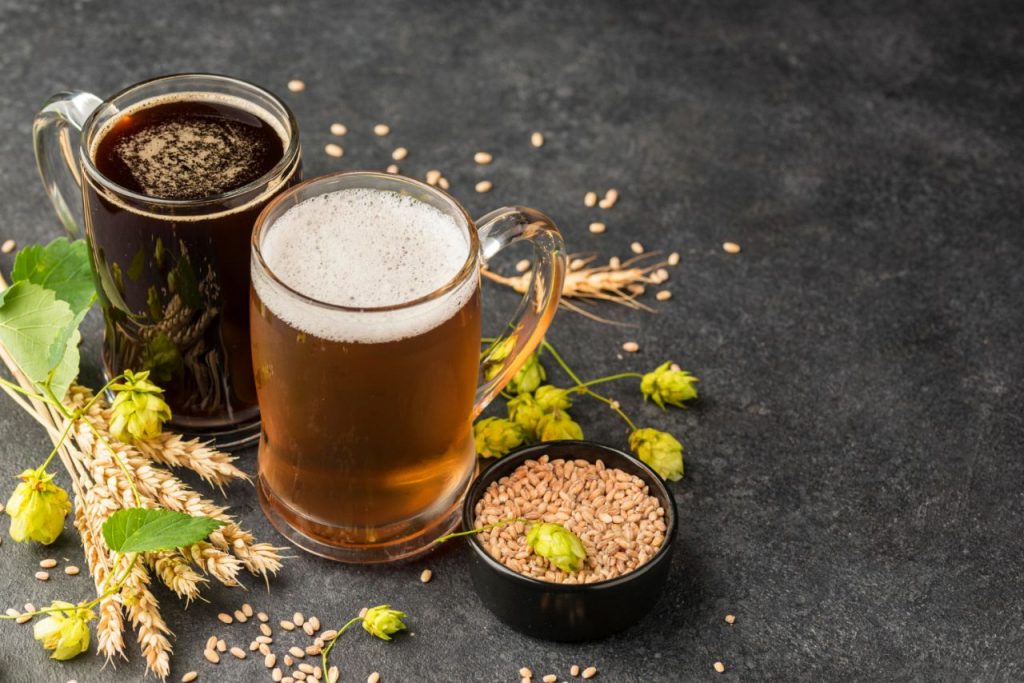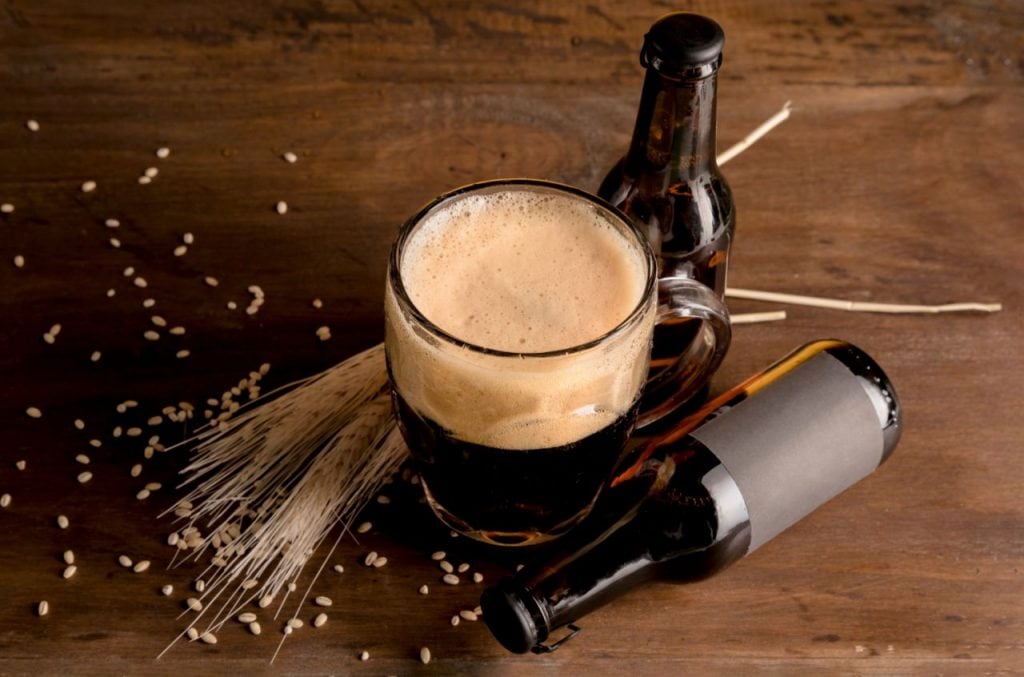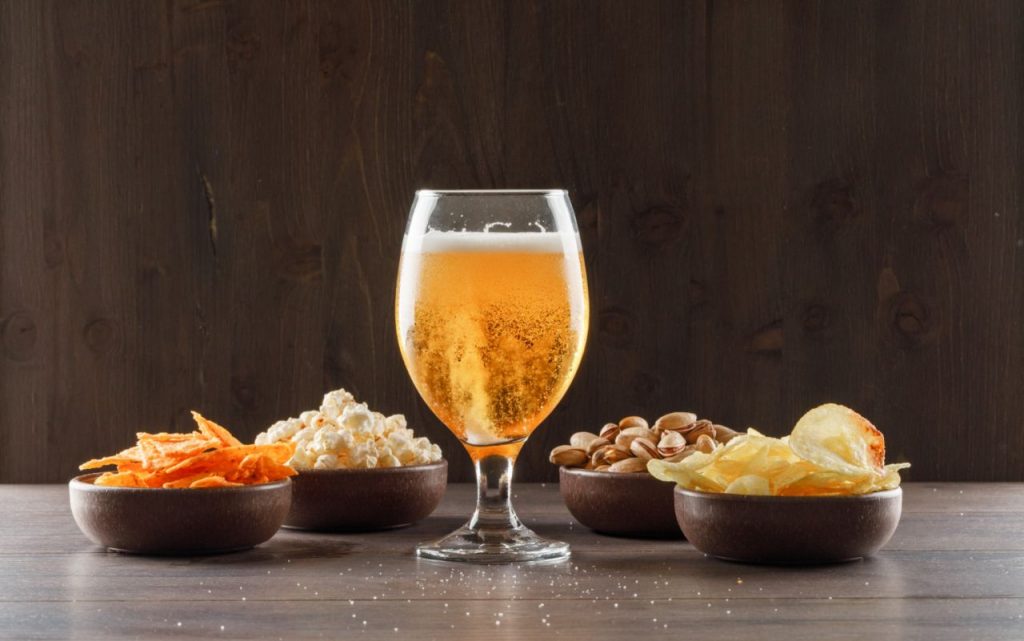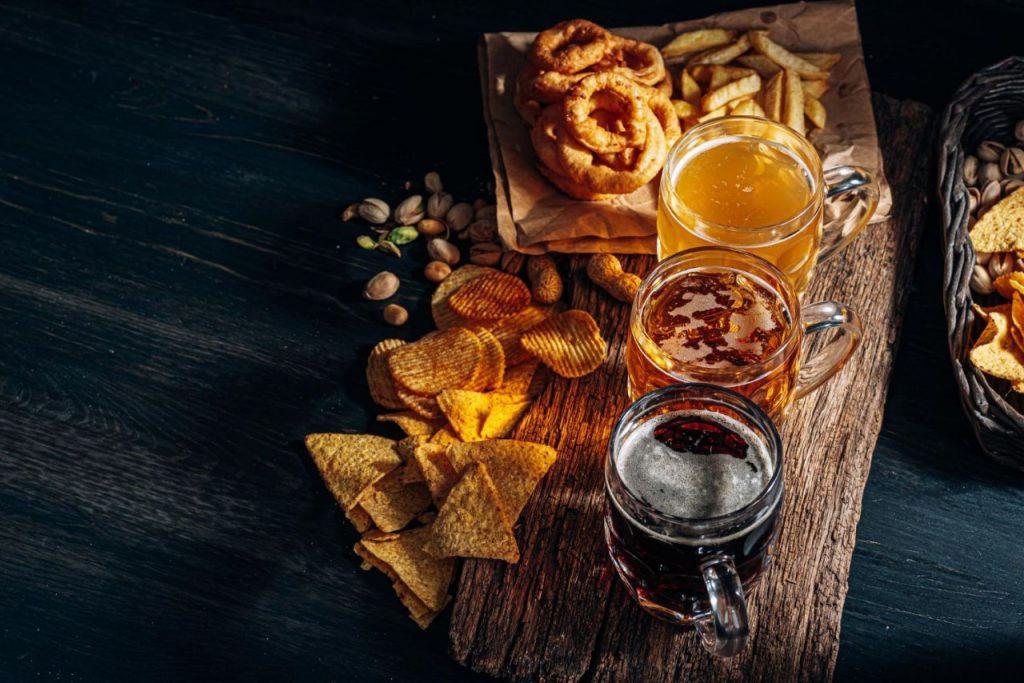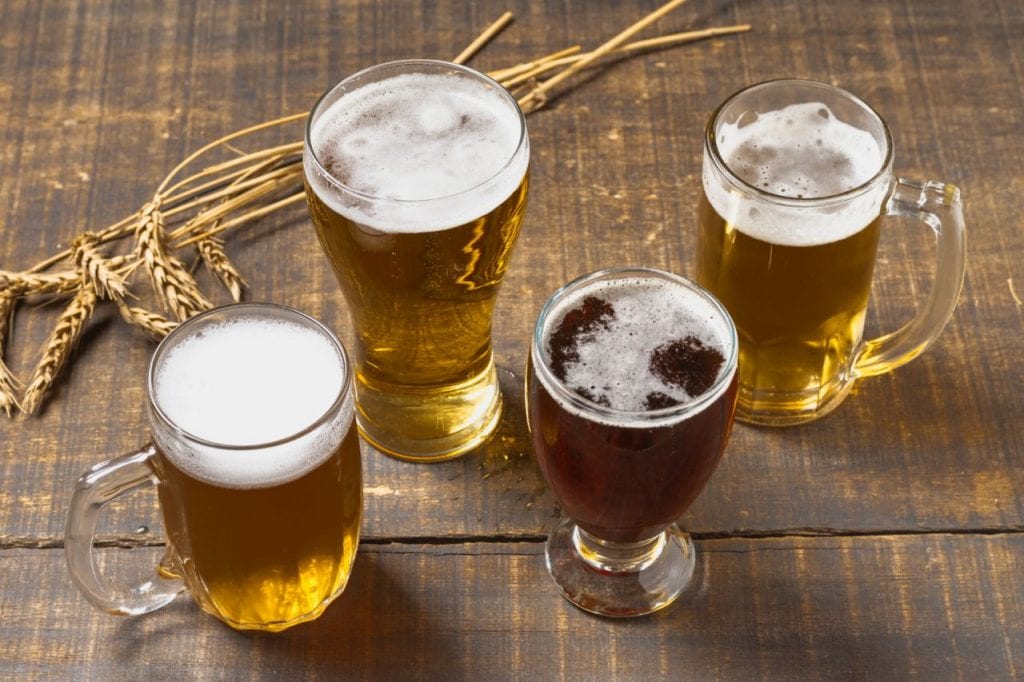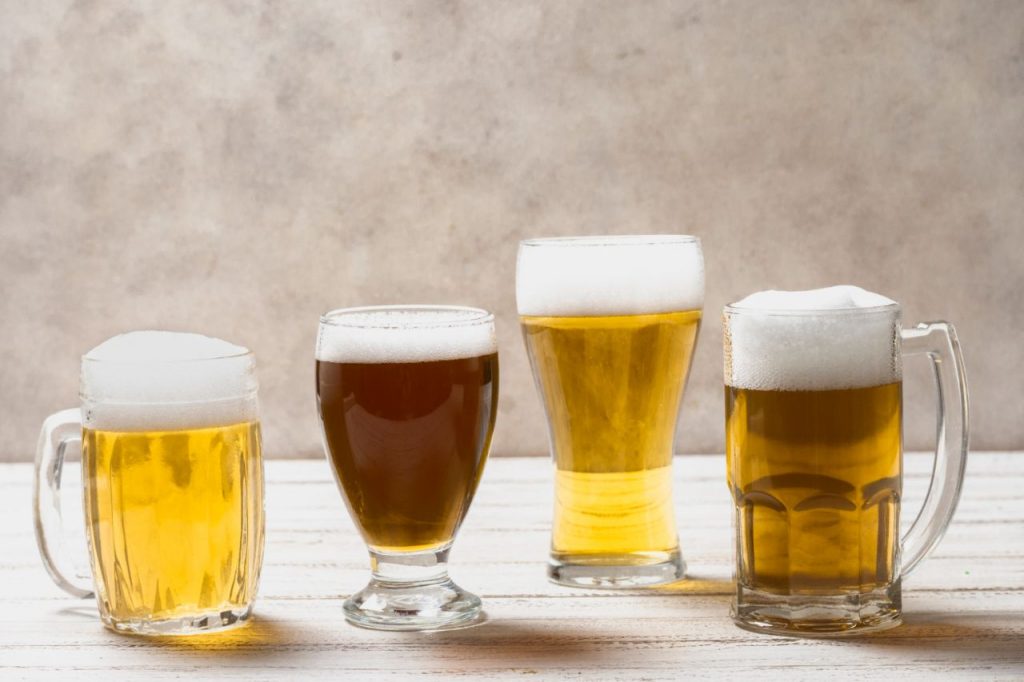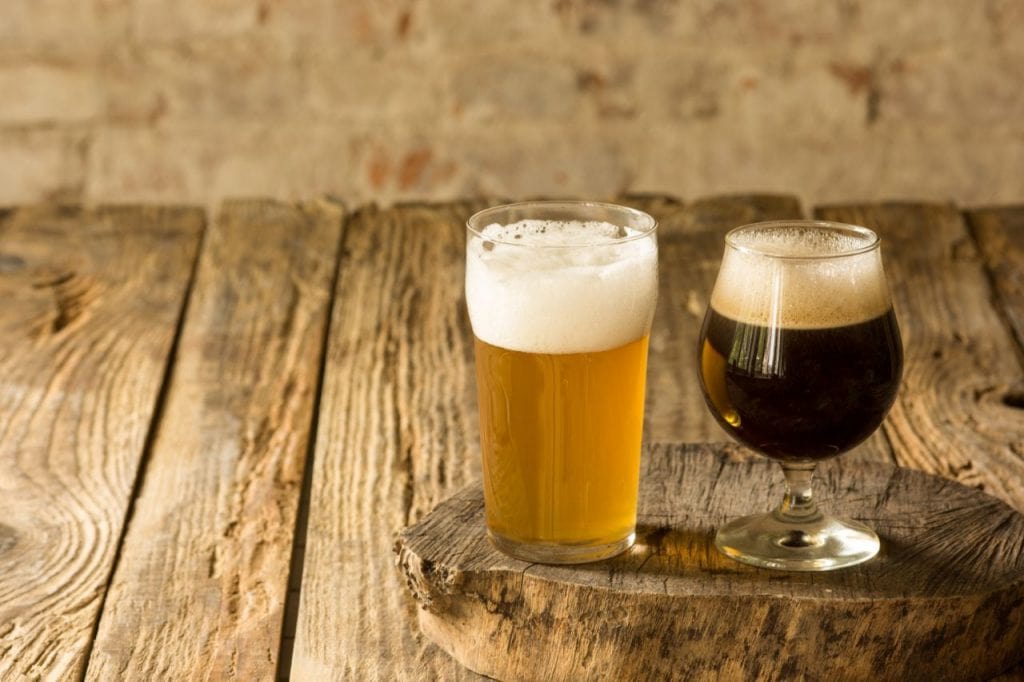Welcome, beer lovers and enthusiasts! If you're like us, you know there's nothing like a cold, refreshing beer to hit the spot after a long day. But what makes beer good or bad? Is it the type of hops used? The brewing process? Or it's just a matter of personal taste?
In this blog, we'll dive deep into beer and explore what makes it truly great (or not so great). So grab a cold one, settle in, and explore the ins and outs of what makes beer good or bad! Don’t forget to grab a drink at Tar Barrel! With our range of craft beers, ciders and spirits - all made on the Distillery Mornington Peninsula using only the freshest ingredients – you’re sure to find something amazing. So come join us at Tar Barrel for an experience like no other!
Possible Beer Health Benefits
Certain beers even have antioxidants, and it's well-known that beer contains healthy nutrients. In addition, some potential health benefits of beer have been suggested by studies:
Reduces The Risk Of Heart Disease
Many studies have found that limiting your beer intake to once or twice per day can help reduce your risk of heart disease. In addition, research suggests that, at similar alcohol concentrations, beer may be just as beneficial to overall heart health as wine.
Drinking alcohol daily has been shown to reduce the chance of death from any cause in one study, with women benefiting from as little as one drink per day and males from as few as two beers per day. The results of a single study cannot be relied upon to determine the root of the problem, but the overall body of evidence is encouraging.
Normalised Blood Sugar Levels
Many individuals with diabetes struggle to stabilise their blood sugar levels, although occasional light alcohol use may help.
Light to moderate alcohol use tends to lessen insulin resistance, a risk factor of diabetes, and the overall risk of developing type 2 diabetes, according to several studies.
A big study with over 70,500 people also found that drinking 14 drinks per week for males and nine drinks a week for women was related to a 43% and 58% decreased risk of diabetes in both men and women, respectively.
Unfortunately, these gains can be nullified, and the risk of diabetes is amplified by heavy and binge drinking.
Furthermore, alcoholic beverages with a high sugar content, such as beer, are not eligible for this potential advantage.
Stronger Bones
Beer may help men and women after menopause builds stronger bones, according to a preliminary study. One possible explanation is that drinking alcohol in moderation is good for your bones. However, the positive effects diminish dramatically after two glasses per day, so moderation is essential.
Beer's Possible Health Dangers
Beer's potency comes from the same ingredients that are bad for human health. As beer intake rises above two glasses daily, several health problems may arise.
When deciding how much beer to incorporate into your diet, think about the following:
Addiction Risk
Addiction is possible with alcohol. There is a genetic link between alcoholism and heavy beer consumption; those with a history of addiction should exercise caution when imbibing. Moreover, most beer's health benefits are nullified by excessive drinking, making addiction the double sword.
Expected Lifespan Shortens
Habitual heavy drinking greatly increases the chance of dying from any cause. In addition, the life expectancy of habitual drinkers is lowered by as much as 28 years, according to studies.
Risk Of Liver Disease
Fatty liver disease, often known as cirrhosis, is associated with drinking over two beers daily.
Weight Increase
Heavy beer consumption is associated with increased body mass since many beers are heavy in calories. A beer belly is a typical way of referring to excess fat around the stomach area. In addition, beer consumption is scientifically proven to lead to a larger waistline.
Other Possible Advantages
Consuming a few beers regularly (light to moderate) may have these advantages:
- It could help with bone density. Men and postmenopausal women who drink beer moderately may benefit from stronger bones.
- As a result, dementia risk may be reduced. Consuming alcohol in moderation may reduce the danger of developing dementia. Yet, excessive alcohol consumption may have the opposite effect.
More Studies On Beneficial Benefits Have Recently Been Conducted.
Beer contains a variety of phytochemicals, the majority of which are phenolic compounds, and it can be difficult to disentangle the effects of alcohol from those of the beer itself when reading published research on the health impacts of beer.
Many disease conditions, such as cancer and coronary artery disease, have been linked to beer drinking, and a wide variety of actions of particular phytochemicals have been described.
Hops contribute roughly 30% of the polyphenols found in beer wort. In addition, many picked isomers and 0.5mg/kg of trans-resveratrol have been found in hops.
Trans-resveratrol is an antioxidant with antiplatelet, oestrogenic, anti-inflammatory, antitumor, cardioprotective, and antiviral effects. In addition, it is thought that trans-priced, at a dose of 2mg/kg, prevents the production of eicosanoids and mitigates the increase in lipid content.
Xanthohumol
We often consume xanthohumol, a flavonoid found in hops, through beer. Cancer-promoting cyclo-oxygenase-2 is inhibited by xanthohumol, and the compound has also been found to prevent colon cancer. Furthermore, Xanthohumol inhibits the enzyme cytochrome P450 per cent of the time, which catalyses the metabolic activation of numerous procarcinogens.
In addition, it stimulates enzymes involved in detoxification, which in turn prevents carcinogenesis. The angiogenesis that feeds tumour growth can be stopped by using hops humulone, which has been found to inhibit cyclo-oxygenase-2.
Hops flavonoids xanthohumol have been demonstrated to have numerous anti-cancer properties in vitro. Yet 8-prenyl naringin, another hops flavonoid, is the strongest oestrogen receptor and agonist ever discovered.
As bitter beers contain significantly more of the latter element than lagers do, they might help with postmenopausal problems like hot flashes and bone loss.
The potential link between beer consumption and decreased bone density is receiving some research attention. Beer prevented femoral bone loss in ovariectomised rats compared to alcohol-only-fed and jump mice. Also, Isoxanthohumol was identified as a useful substance, but 8-prenyl naringin was shown to be useless.
Polyphenols
In response to medical claims, breweries have financed numerous studies on the effects on wine's polyphenol content.
Many studies have indicated that moderate alcohol intake improves atherosclerosis risk factors such as lipid metabolism, antioxidant capacity, and coagulant status.
It is widely believed that the reduction in mortality and morbidity from coronary artery disease is a direct outcome of these adjustments to alcohol content.
There was a marked reduction in both total cholesterol and triglycerides. A study looking at the effects of lyophilized beer upon lipid metabolism and antioxidant activity in the serum of rats nevertheless showed higher levels of high-density lipoprotein cholesterol. Only 6ml was needed.
This phenolic component of a lyophilised beer residue, the scientists reasoned, was to blame for the observed effects.
Due to their high polyphenol content, some drinks are thought to have more potent antioxidant activity. While beer has much more antioxidant activity than wine, wine has a higher phenolic concentration.
Higher levels of epicatechin and ferulic acid, as well as similar levels of quercitin,?-coumaric, or gallic acid, have been identified in beer compared to wine; these antioxidants appear to be the reason for the effects seen. It's also been proven that ferulic acid is easily absorbed by the human body.
Nondrinking men (n=42) with hypercholesterolemia were advised to consume 30 days of 330ml of beer as part of a recent clinical investigation. Hence, plasma antioxidants & anticoagulants try to motivate while plasma lipid levels decrease.
A society sample of 5,865 older people from 4 places in Australia found that alcohol use was associated with lower inflammatory markers in this group of patients free of cardiovascular disease.
Researchers have explored the effects of alcohol or phenolic compounds using available commercially alcohol-free beer.
Consumption of an acute dose of approximately three litres of beer reduced thrombogenic activity in healthy young adults, which may have beneficial effects in warding off coronary artery disease.
Researchers have found that in populations where folate intake is low, even modest beer consumption can bring homocysteine levels back to normal. This adds to the mounting body of research suggesting that beer may help lower the risk of cardiovascular disease for some people.
Aluminum has been implicated as a possible causative factor in Alzheimer's disease, and it is known that silicon might affect the bioavailability of aluminium.
Quite a quantity of silicon in beer, according to animal studies, can block aluminium from being absorbed in the digestive tract and into the body.
A major prospective study's findings on the impacts of moderate beer intake have been revealed. Beer was found not to affect weight gain.
Beer's Negative Effects
Researchers have sought to put a monetary value on beer's drawbacks. Most unfavourable results can be traced back to having an excessive amount of alcohol in the system, which is possible after consuming a lot of beer.
Heavy drinking has been related to numerous sudden medical issues, including pancreatitis, high blood alcohol levels, poisoning, and even suicide. There were also chronic problems such as malignant neoplasms, influenza, diabetes, tuberculosis, hypertension, pneumonia, and even chronic pancreatitis.
To find out if the 2.1 litres of free beer offered to brewery workers in Denmark affected their risk of cancer, researchers analysed data from 13,501 individuals. The results showed a slight increase in the risk of cancers of the colon and rectum, and a greatly increased risk of cancers of the mouth and throat, lungs, and urinary tract.
Yet, studies conducted in eastern France found that drinking beer and wine in moderation lowered the risk of death from cardiovascular disease.
Conclusion
Potential health benefits of beer, such as lowered risk of cardiovascular disease and improved glucose tolerance, are eliminated by excessive beer consumption. Although postmenopausal women and men who drink beer may benefit from improved bone density, the beverage also carries the dangers of addiction, obesity, and liver illness.
Regular beer consumption is associated with improved bone density and a lower incidence of dementia. Xanthohumol inhibits cytochrome P450 and promotes enzymes involved in detoxification, avoiding carcinogenesis, whereas trans-resveratrol is an antioxidant with antiplatelet, oestrogenic, anti-inflammatory, anticancer, cardioprotective, and antiviral properties.
Higher quantities of epicatechin, ferulic acid, quercitin, and gallic acid are thought to be responsible for beer's potential to reduce the risk of cardiovascular disease in some people. Beer's drawbacks stem from the fact that too much of it can cause immediate health problems such pancreatitis, high blood alcohol levels, poisoning, and even suicide.
Content Summary
- Many studies have found that limiting your beer intake to once or twice per day can help reduce your risk of heart disease.
- Light to moderate alcohol use tends to lessen insulin resistance, a risk factor of diabetes, and the overall risk of developing type 2 diabetes, according to several studies.
- Beer may help men and women after menopause builds stronger bones, according to a preliminary study.
- One possible explanation is that drinking alcohol in moderation is good for your bones.
- The positive effects diminish dramatically after two glasses per day, so moderation is essential.
- Beer's potency comes from the same ingredients that are bad for human health.
- As beer intake rises above two glasses daily, several health problems may arise.
- Moreover, most beer's health benefits are nullified by excessive drinking, making addiction the double sword.
- Men and postmenopausal women who drink beer moderately may benefit from stronger bones.
- Consuming alcohol in moderation may reduce the danger of developing dementia.
- Beer contains a variety of phytochemicals, the majority of which are phenolic compounds, and it can be difficult to disentangle the effects of alcohol from those of the beer itself when reading published research on the health impacts of beer.
- Many disease conditions, such as cancer and coronary artery disease, have been linked to beer drinking, and a wide variety of actions of particular phytochemicals have been described.
- Xanthohumol We often consume xanthohumol, a flavonoid found in hops, through beer.
- Yet 8-prenyl naringin, another hops flavonoid, is the strongest oestrogen receptor and agonist ever discovered.
- The potential link between beer consumption and decreased bone density is receiving some research attention.
- Many studies have indicated that moderate alcohol intake improves atherosclerosis risk factors such as lipid metabolism, antioxidant capacity, and coagulant status.
- It is widely believed that the reduction in mortality and morbidity from coronary artery disease is a direct outcome of these adjustments to alcohol content.
- It's also been proven that ferulic acid is easily absorbed by the human body.
- Nondrinking men (n=42) with hypercholesterolemia were advised to consume 30 days of 330ml of beer as part of a recent clinical investigation.
- Hence, plasma antioxidants & anticoagulants try to motivate while plasma lipid levels decrease.
- A society sample of 5,865 older people from 4 places in Australia found that alcohol use was associated with lower inflammatory markers in this group of patients free of cardiovascular disease.
- Researchers have explored the effects of alcohol or phenolic compounds using available commercially alcohol-free beer.
- Consumption of an acute dose of approximately three litres of beer reduced thrombogenic activity in healthy young adults, which may have beneficial effects in warding off coronary artery disease.
- Researchers have found that in populations where folate intake is low, even modest beer consumption can bring homocysteine levels back to normal.
- This adds to the mounting body of research suggesting that beer may help lower the risk of cardiovascular disease for some people.
- Aluminum has been implicated as a possible causative factor in Alzheimer's disease, and it is known that silicon might affect the bioavailability of aluminium.
- Quite a quantity of silicon in beer, according to animal studies, can block aluminium from being absorbed into the digestive tract and into the body.
- A major prospective study's findings on the impacts of moderate beer intake have been revealed.
- Researchers have sought to put a monetary value on beer's drawbacks.
- Most unfavourable results can be traced back to having an excessive amount of alcohol in the system, which is possible after consuming a lot of beer.
- Heavy drinking has been related to numerous sudden medical issues, including pancreatitis, high blood alcohol levels, poisoning, and even suicide.
- To find out if the 2.1 litres of free beer offered to brewery workers in Denmark affected their risk of cancer, researchers analysed data from 13,501 individuals.
- The results showed a slight increase in the risk of cancers of the colon and rectum, and a greatly increased risk of cancers of the mouth and throat, lungs, and urinary tract.
- Yet, studies conducted in eastern France found that drinking beer and wine in moderation lowered the risk of death from cardiovascular disease.
Frequently Asked Questions
The ingredients that make beer, good or bad, depending on the beer being made. For example, in ales, hops can contribute to bitterness and flavour, while in lagers, malt is the dominant flavour. Good beer typically uses high-quality ingredients that are fresh and carefully chosen to create a specific flavour profile.
Beer freshness depends on how it's stored and the type of beer. For example, hoppy beers like IPAs are best consumed fresh since the hop flavours and aromas dissipate over time. Stale beer can taste flat, oxidised, or like cardboard. Proper storage, such as keeping beer refrigerated and away from light, can help maintain its freshness.
A well-balanced beer has a harmonious flavour profile, with no one flavour overpowering the others. It should have a good level of bitterness, sweetness, and acidity, with no one characteristic dominating the beer. Additionally, it should have a clean finish and not leave any unpleasant aftertaste.
Temperature can greatly impact the flavour and aroma of beer. For example, serving beer too cold can mask the flavours and aromas, while serving it too warm can accentuate off-flavours and make it taste flat. The ideal serving temperature depends on the type of beer, with lighter beers typically served colder than darker, heavier beers.
Carbonation is an essential component of beer, as it adds to the mouthfeel and overall experience of drinking beer. Proper carbonation can provide a crisp and refreshing sensation on the palate, while too much carbonation can make the beer taste overly fizzy and detract from the flavour profile.




